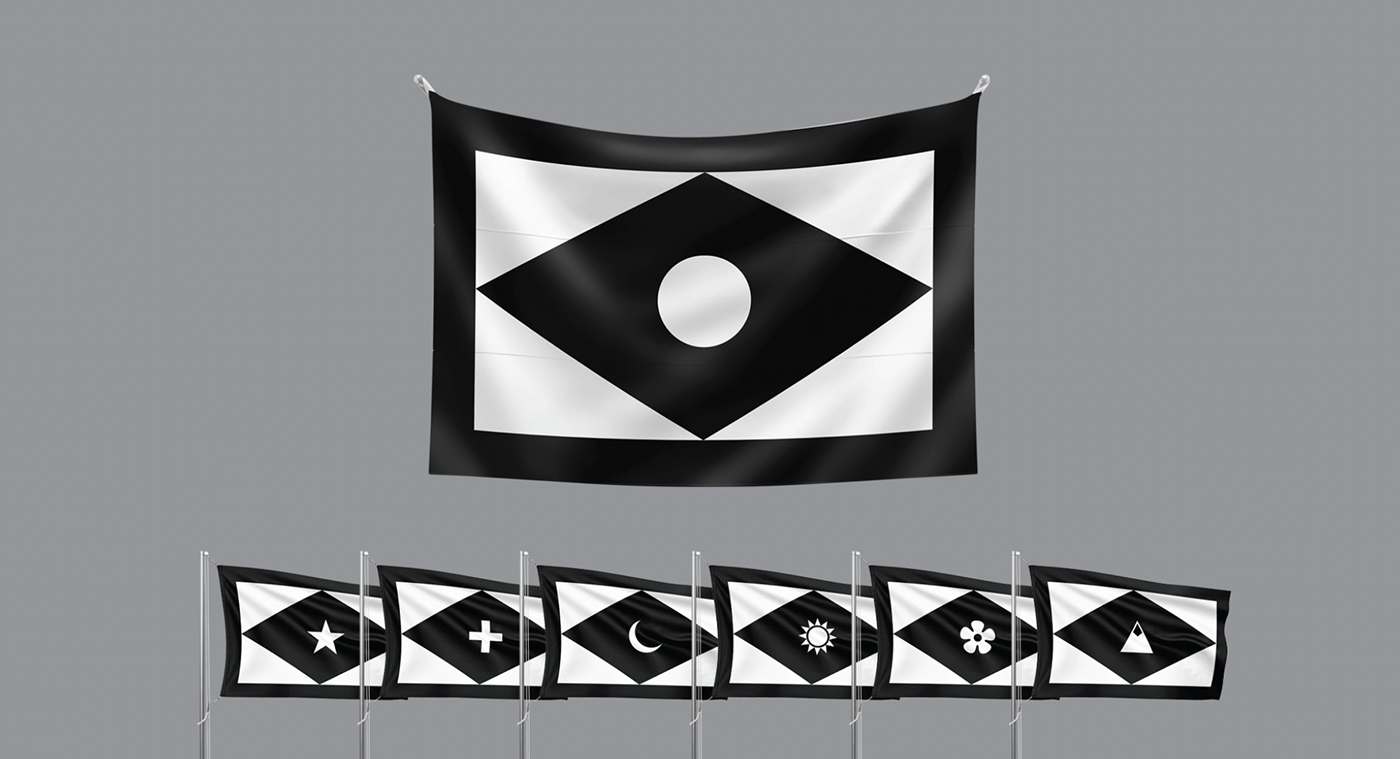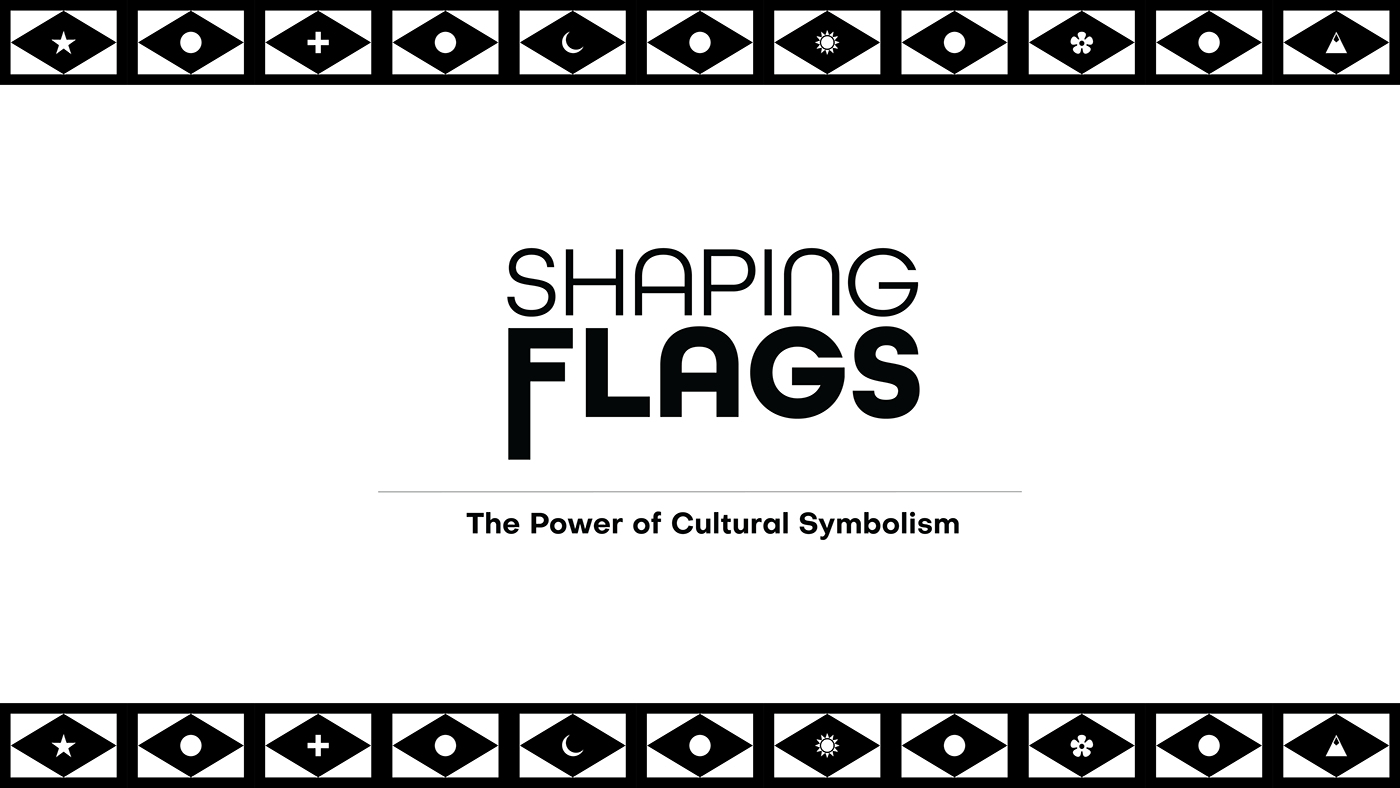
Flags are extremely powerful tools that can universally express cultural and geographic identity through visual communication. While to some people they may be little more than a piece of coloured cloth, to others they are extremely important symbols that embody the values and ideals of their ethnic origins.
Shaping Flags is an innovative educational and participatory exhibition experience, which focuses on exploring the ability national and regional flags have to profoundly express cultural identity. The exhibition aims to help participants better comprehend the deep symbolic meanings that lie beyond the minimalist nature of good flag design.
With an emphasis on discovery and interaction, Shaping Flags combines four major outcomes to create a highly engaging experience suitable for people of all ages.

Interactive Flag Puzzles Exhibition
The Shaping Flags exhibition consists of 18 large-scale interactive flag puzzles housed in a temporary installation at the Melbourne Convention and Exhibition Centre. The installation is partitioned into six distinctly different and commonly used geometric flag symbol themed rooms. Each room includes three flag puzzles that represent best practice in how these symbols can be effectively featured in good flag design to strongly and meaningfully express cultural identity.






The six geometric symbol themes represent the most commonly occurring symbols used in flag design. They have become definitively associated with their use as representations of cultural identity.






As a ticketed exhibition, a limited number of participants at one time are tasked with constructing each numbered flag puzzle on its plinth using the large-scale puzzle pieces housed in the corresponding moulds. Once a flag has correctly been constructed participants can discover the hidden information about them using the Shaping Flags app.
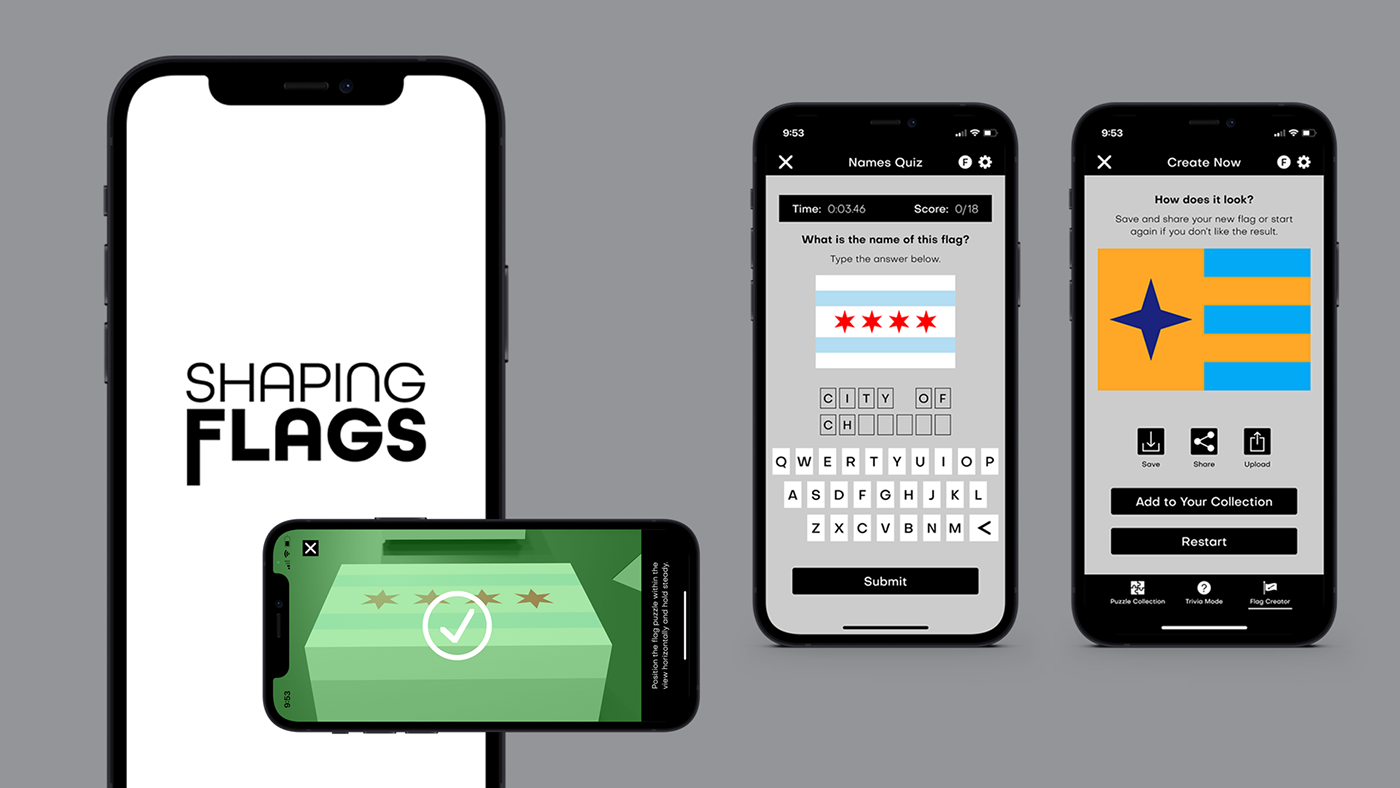
Interactive Exhibition App
The primary feature of the Shaping Flags app enables users to scan each exhibition flag puzzle to check if it has been correctly constructed. Once a flag has been correctly scanned it will be added to the user's puzzle collection and its educational details will be revealed. Once all 18 exhibition flags have been revealed additional app features will be unlocked in order to reinforce the flag knowledge participant's have gained from the interactive experience. The minimalist and monochromatic design of the app supports the importance of simplicity in good flag design and enables the colourful flag designs to stand out and be emphasised.


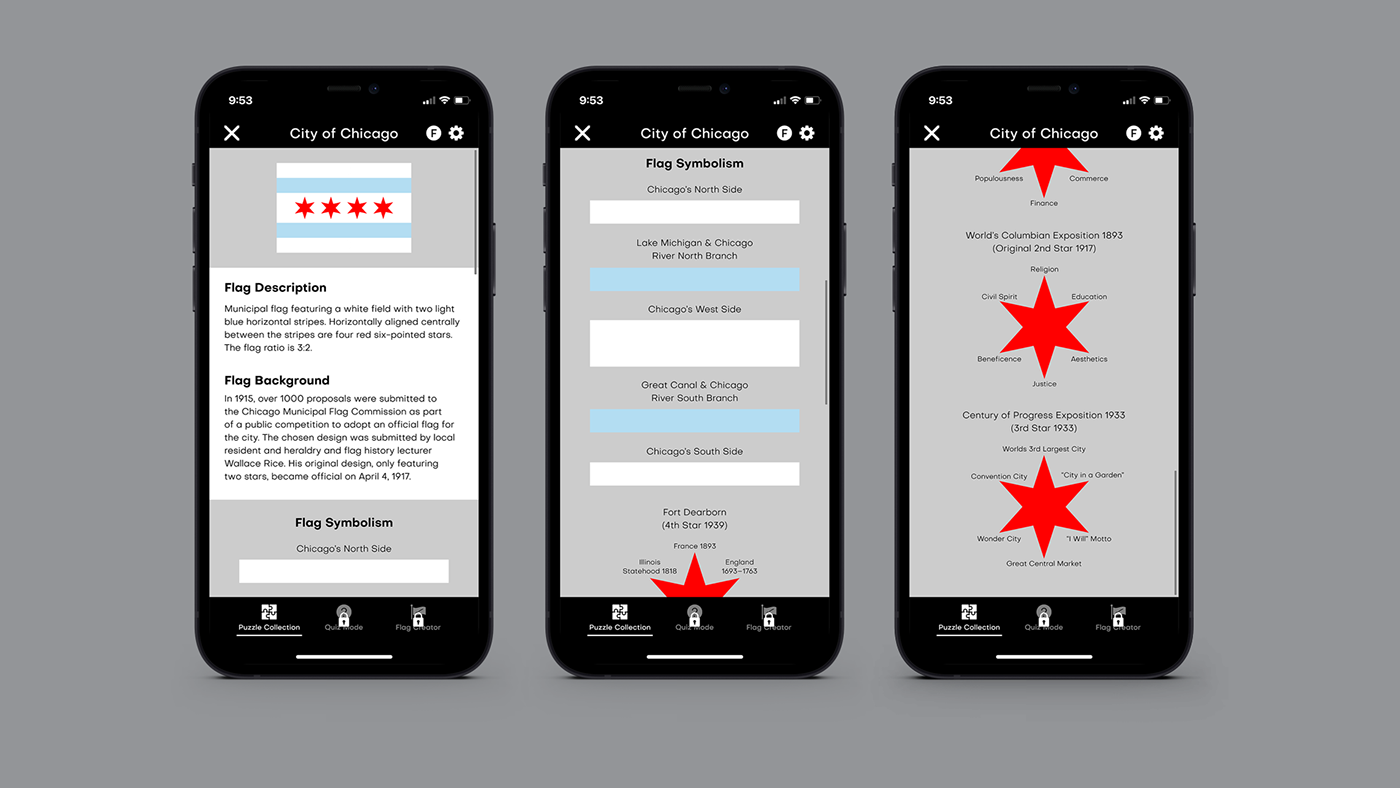


The Shaping Flags quiz mode features four different quizzes relating to four specific aspects of flag design: names, charges, colours and symbolism. In an effort to top the public quiz rankings, players are encouraged to quickly remember these details against the clock in regard to each of the 18 exhibit flag puzzles. An ultimate quiz combines all four aspects from the other quizzes into one.
The third and final feature of the Shaping Flags app is a custom flag creator. This enables users to design their own flags using the flag knowledge they have gained as inspiration. Rather than leave users completely to their own devices, the flag creator guides them through a step by step process to make a good flag using a broad array of predetermined templates. This ensures users learn about the correct flag design process and stay within the bounds of good flag design. Once a custom flag has been created, users can save and share it with their friends and the Shaping Flags community.




Flag Anatomy and Principles Handbook
At the beginning of the exhibition experience participants are provided with the Shaping Flags handbook which serves as a supportive exhibition resource. It provides short explanations and visual examples covering the fundamental anatomy, protocols, symbolism and design principles relating to the form and function of national and regional flags. Printed at a custom size of 120 x 180mm, the handbook mimics a mini flag at the most common flag ratio of 2:3. This size means it can be easily carried around as a reference material during the exhibition experience.





In order to maintain the aesthetic qualities of the publication flag illustrations, which heavily emphasise the visual impact and cultural symbolism of combined flag colours, patterns and compositions, flag identification labels are omitted.


To combat the lack of flag labels that may frustrate many readers, the handbook is accompanied by a double sided A1 publication poster that folds down to A5. The poster includes every flag design that was in some way included in the publication with accompanying labels featuring their names and date of adoption. The poster also serves as a striking visual communication piece in its own right that can be displayed in several different ways.



Promotional Mementos
The final major outcome of the Shaping Flags exhibition is several promotional mementos that can be purchased at the conclusion of the experience. These mementos are designed to incentivise information retainment by featuring the exhibition flag puzzles in contexts focused on gamification and memory.
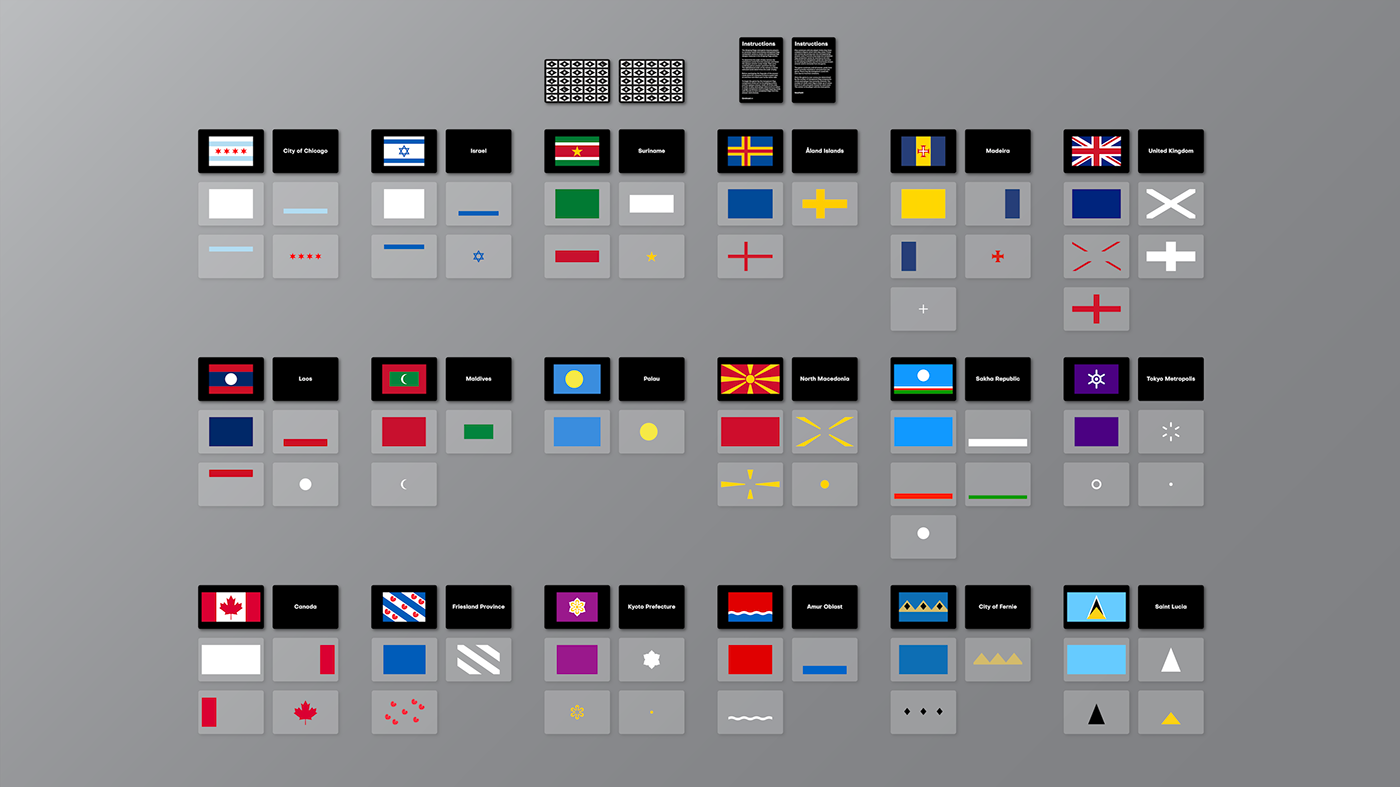



The Shaping Flags card game requires players to correctly match and overlay transparent flag component cards to create the completed flag designs featured in the Shaping Flags exhibit. Unlike the exhibition flag puzzles which are sliced into random pieces, the cards are broken up based on the layering of the key individual geometric elements of each flag.
The card game not only serves as a way to incentivise people who have already experienced the exhibition to remember the design and symbolism of the exhibition flag puzzles but also allows the exhibition to be promoted to others who may play the game with them.


Mini replicas of each 3D flag design puzzle that was featured in the exhibition are also available for purchase. They are an exact colour copy and identically replicate the way each puzzle was broken up in the exhibition. The mini replica packaging features the design of each flag in black and white to match the exhibition visual identity.
